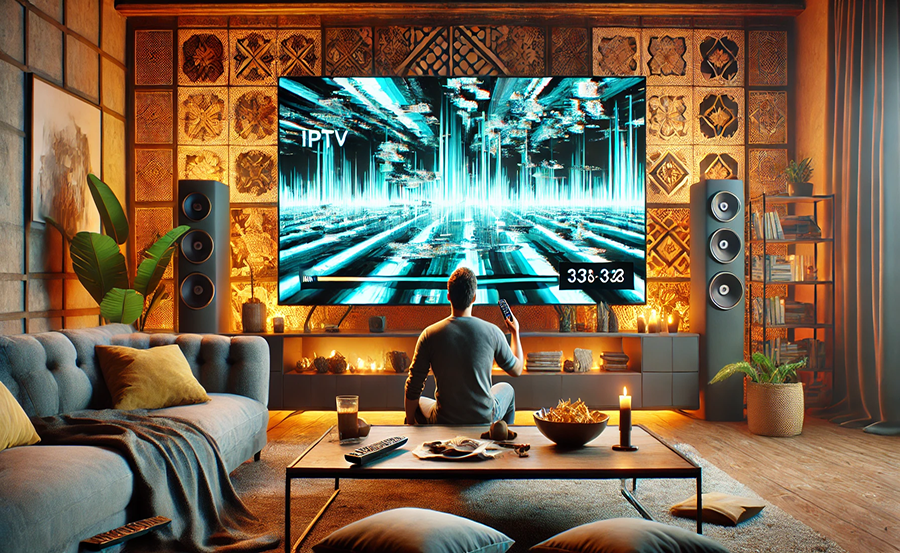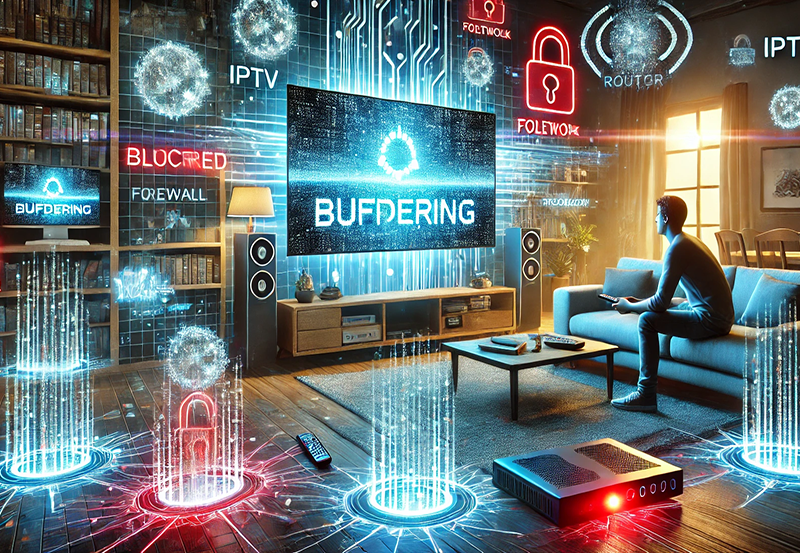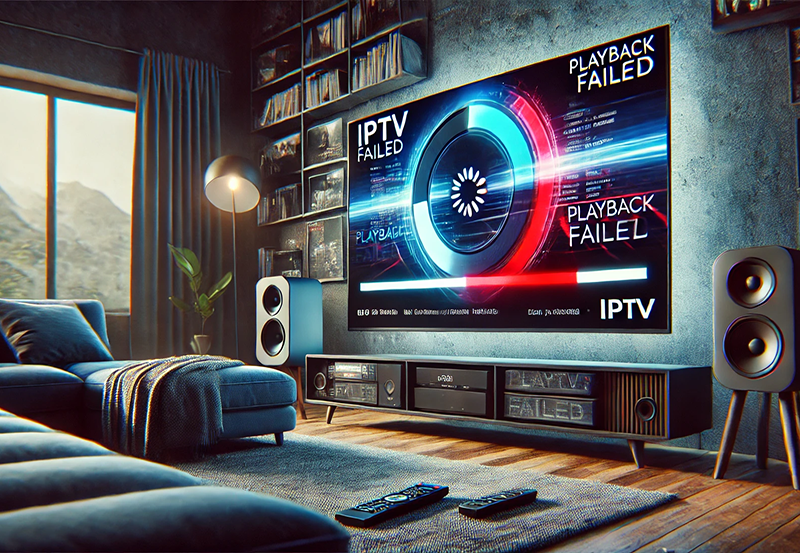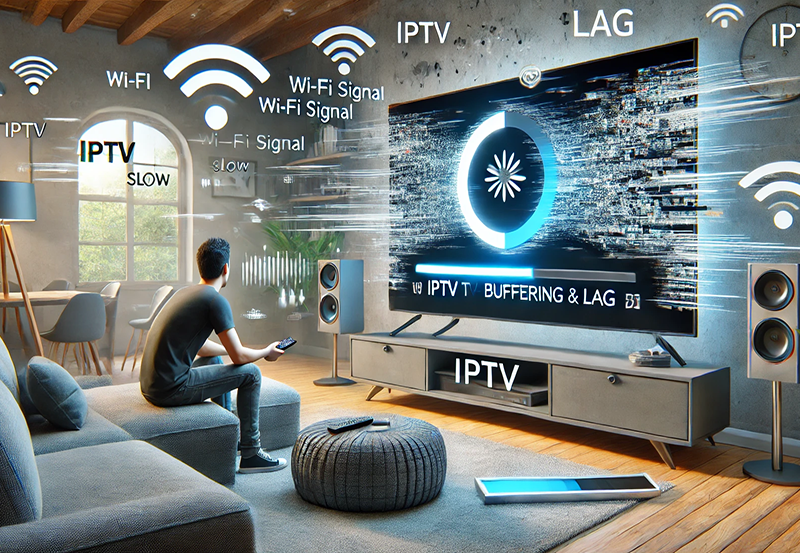In this modern age, where digital entertainment is king, IPTV has emerged as a go-to method for seamless streaming of television content. However, buffering and low-quality streams can be frustrating, especially when trying to catch the latest game or unwind with your favorite show. In this guide, we’ll dive into proactive methods to enhance your Internet connection for a smooth and enjoyable IPTV experience.
Understanding IPTV: What You Need to Know
The term IPTV stands for Internet Protocol Television. It’s a digital service that delivers television content over the Internet rather than through traditional satellite or cable formats. This shift towards IPTV for sports streaming, especially, offers unparalleled convenience and flexibility.
With IPTV, users can enjoy a wide array of live TV channels, on-demand shows, and even exclusive sports events, all delivered via the web. But like all technology, the quality of your experience with IPTV hinges on several factors, primarily your Internet connection.
Quick Suggestion:
Enjoy premium live TV and sports with Xtreme HD UK IPTV, the ultimate subscription for seamless streaming.
Essential Components for IPTV Streaming
Reliable Internet Connection
The cornerstone of high-quality IPTV streaming is a reliable Internet connection. Slow speeds or intermittent drops can disrupt your viewing experience. A minimum speed of 10 Mbps is often recommended, but higher speeds offer greater stability and quality, particularly for high-definition content.
Compatible Devices
To get started with IPTV, you’ll need a device that supports IPTV applications. Common choices include smart TVs, streaming devices like Roku or Amazon Fire Stick, and even gaming consoles. Ensure your device is updated with the latest software to avoid connectivity issues.
How to Install IPTV: A Step-by-Step Guide
Choose the Right Service Provider
Selecting a reputable IPTV provider is crucial for accessing reliable streams. Look for providers with good reviews and a strong customer support team. Check their channel offerings to ensure they match your viewing interests.
Setting Up Your IPTV System
Once you’ve chosen a provider, the next step is setting up the IPTV application on your device. Most providers will give you an installation guide tailored to different devices, ensuring a smooth setup process. Here’s how you can get started:
- Download the IPTV app on your device.
- Install and open the app.
- Enter the login credentials provided by your IPTV service.
- Customize settings as per your preference.
Optimizing Your Internet Connection for IPTV
Boosting Your Wi-Fi Signal
Poor Wi-Fi signals can lead to buffering and lagging while streaming. To combat this, position your router centrally in your home and away from any obstructions. Additionally, consider investing in a Wi-Fi extender if your space is large or has multiple floors.
Wired Connections: A Better Alternative?
For those facing persistent streaming issues, switching to a wired connection might be the solution. Connecting your device directly to the router using an Ethernet cable reduces latency and ensures a more stable connection.
Master Your IPTV Entertainment Experience
To truly master your IPTV entertainment, it’s important to become adept with the tech you have at hand. Regularly update your device firmware and the IPTV app to enjoy new features and performance improvements. Engage with online forums for tips and tricks from experienced users.
Using a Router with Quality of Service (QoS)
Enabling QoS settings on your router allows you to prioritize IPTV traffic over other types of data. This ensures that your streaming quality remains uninterrupted even if other devices are using the Internet.
Monitoring Data Usage
While IPTV doesn’t necessarily consume more data than traditional streaming services, high-definition content can quickly add up. Monitor your data usage to prevent any surprises, especially if your ISP imposes data caps.
Addressing Common IPTV Issues
Buffering and Lag
Lag and buffering are common complaints among IPTV users. Besides checking your Internet speed, make sure you’re using updated software and consider disabling other connected devices during peak viewing times.
Picture Quality Problems
If you encounter pixelation or blurry streams, examine whether it’s the source or your connection. Keep your device’s software updated, and whenever possible, use resolutions suited to your screen’s capability.
Creative Pathways to Enhanced IPTV Enjoyment
Diving deep into the realm of IPTV can be like exploring a vast ocean of entertainment options. Engaging fully involves not just securing a stable network, but also discovering everything your IPTV service can offer and experimenting with personalized viewing options.
Try setting reminders or use apps that integrate well with your IPTV service, taking advantage of both live programming and on-demand content for a mix of new discoveries and comforts of familiar cinematic experiences.
Frequently Asked Questions About IPTV Streaming

How can I ensure the best streaming quality for sports on IPTV?
To optimize IPTV for sports streaming, ensure a high-speed Internet connection, reduce network congestion by limiting other background activities, and use a wired connection whenever possible.
What should I look for in an IPTV service provider?
Key factors include a reliable service with minimal downtime, a diverse channel selection that matches your preferences, competitive pricing, and responsive customer support to address any issues promptly.
Do I need a special device to access IPTV services?
Not necessarily; most modern smart TVs, smartphones, and even gaming consoles support IPTV applications. Check your device specifications to ensure compatibility.
Is my internet connection fast enough for IPTV?
You ideally need a minimum speed of 10 Mbps for standard definition and up to 25 Mbps for high-definition content. Test your Internet speed to verify it’s sufficient for your streaming needs.
How often should I update my IPTV software?
Regular updates are crucial for optimal performance. Keep both your IPTV application and device firmware updated to the latest versions to benefit from security patches and feature enhancements.
Resolving IPTV Buffering Problems: Wi-Fi Network Solutions





